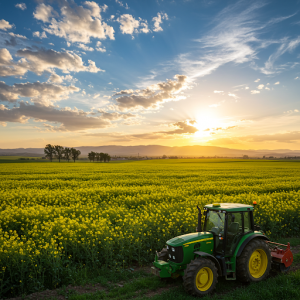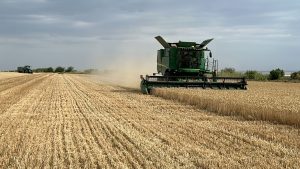
Paste Fericit 2025 – Happy Easter 2025
Dragi angajați, colaboratori, clienți și familiile voastre, Cu ocazia Sfintelor Sărbători de Paște, vă transmitem cele mai calde urări de sănătate, bucurie și prosperitate. Fie ca Lumina Învierii să vă aducă pace în suflet, armonie și multă fericire alături de cei dragi. Vă mulțumim pentru încrederea și colaborarea voastră și vă dorim un Paște binecuvântat! Cu stimă și considerație, BIO FARM CRUCEA STAFF

A Year of Growth and Hope Together
HAPPY NEW 2025 Dear colleagues, suppliers, and customers, With a heart full of gratitude, we wish you a Happy New Year 2025! To all our past and present employees, thank you. Your dedication, passion, and hard work have been instrumental to Biofarm Crucea’s success. Thank you for believing in our vision and for working with us to build a better future in organic agriculture. To our esteemed suppliers, we express

Merry Christmas – Craciun Fericit 2024
As the holiday season approaches, we at Bio Farm Crucea would like to extend our warmest wishes for a Merry Christmas to all our clients, suppliers and employees. We appreciate your continued support and partnership. Your trust and collaboration have been invaluable to our success. We look forward to working with you in the coming year and wish you a joyous holiday season filled with peace, love, and prosperity. BIO

Twenty years in Romania: Bio Farm Crucea celebrates and open a new organic trading activity
Not so long ago, few pioneers and individual investors decided to come to Romania and start a business in sustainable organic agriculture. It was summer 2004 and they stopped at the foothills of Crucea (Dobrogea), near “Dealul al Bahir” National Reserve Park. On July 4th 2024, Bio Farm Crucea, a leading Romanian producer of grains, sunflower, proteic peas and other organic agri commodities, is celebrating its 20th anniversary. The company

Bio Farm Crucea has started harvesting!
Bio Farm Crucea winter crop harvest has finally ramped up! We expect to increase our production in 2024, largely due to favourable growing-season weather. This is in stark contrast to the fate of the Russian crop on the opposite side of the Black Sea, which has suffered greatly at the hand of extremely hot and dry spring weather. Romania (and Dobrogea in particular), has enjoyed beneficial growing conditions so far

Happy Orthodox Easter 2024
Paşte fericit! Hristos a înviat! Bio Farm Crucea wishes you a joyous and blessed Orthodox Easter! May this holy season bring renewed hope, peace, and the warmth of spring to you and your loved ones. As we celebrate the miracle of Christ’s resurrection, let us cherish the bounty of the earth and the joy of working together to cultivate a sustainable future. Paşte fericit! Χρόνου Πολλά! Buona Pasqua! Happy Easter!
